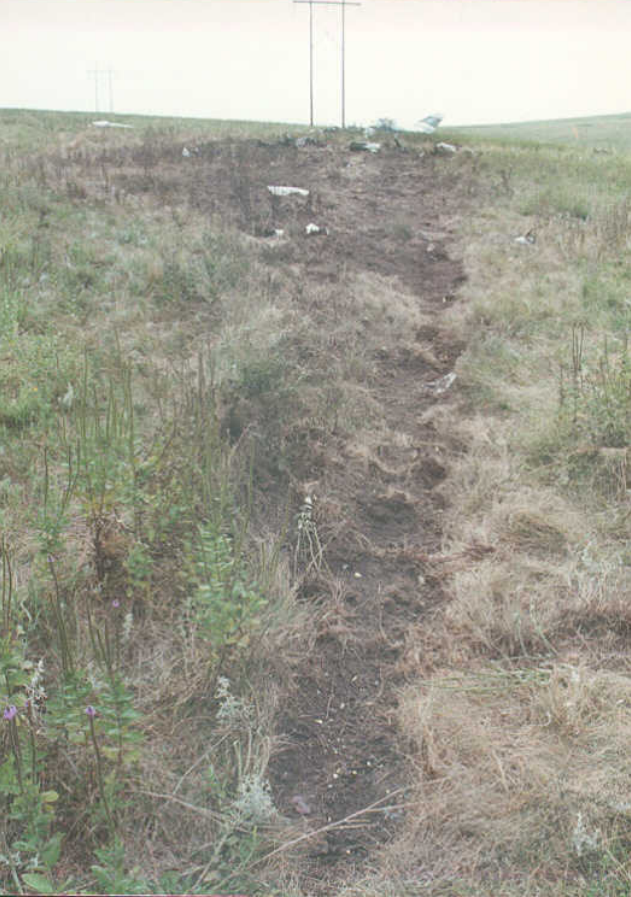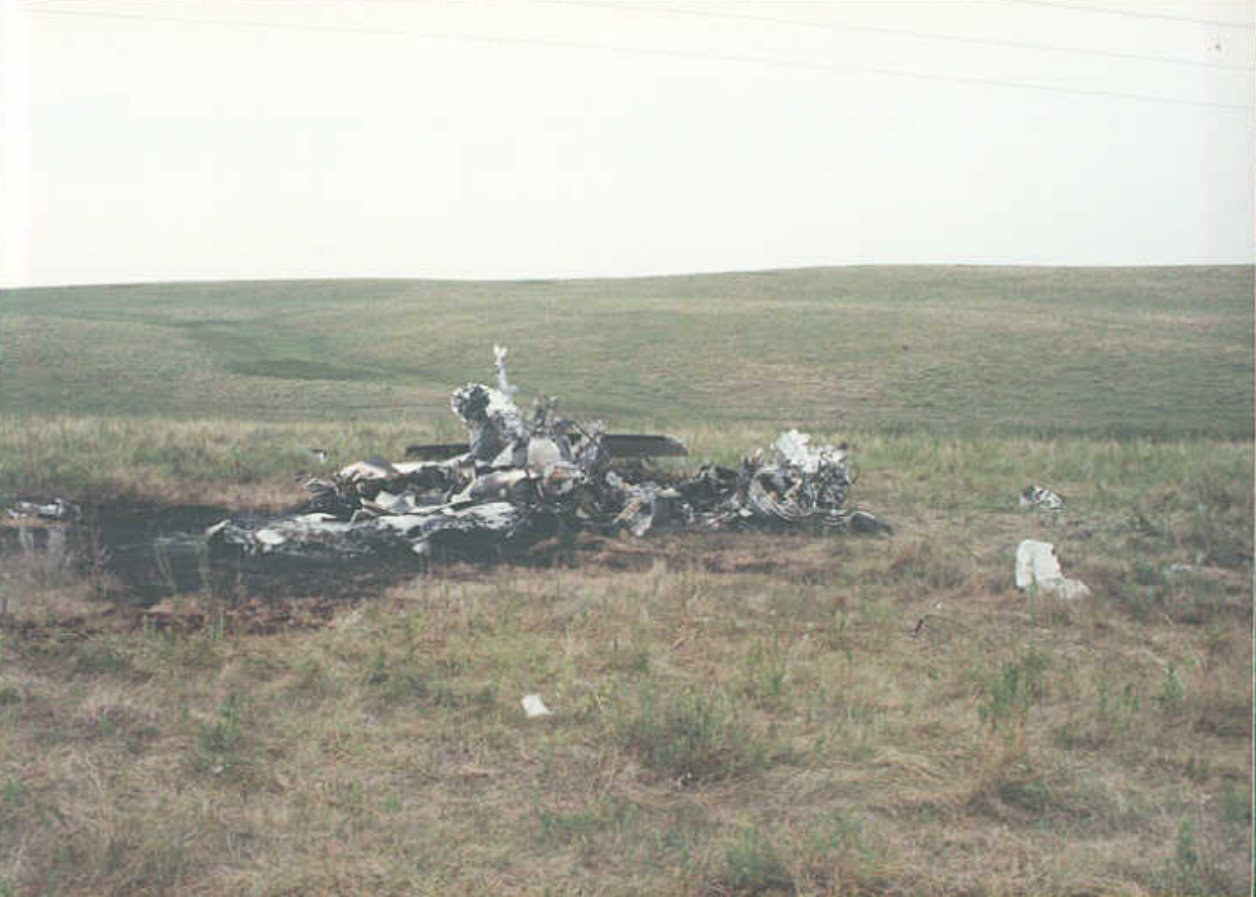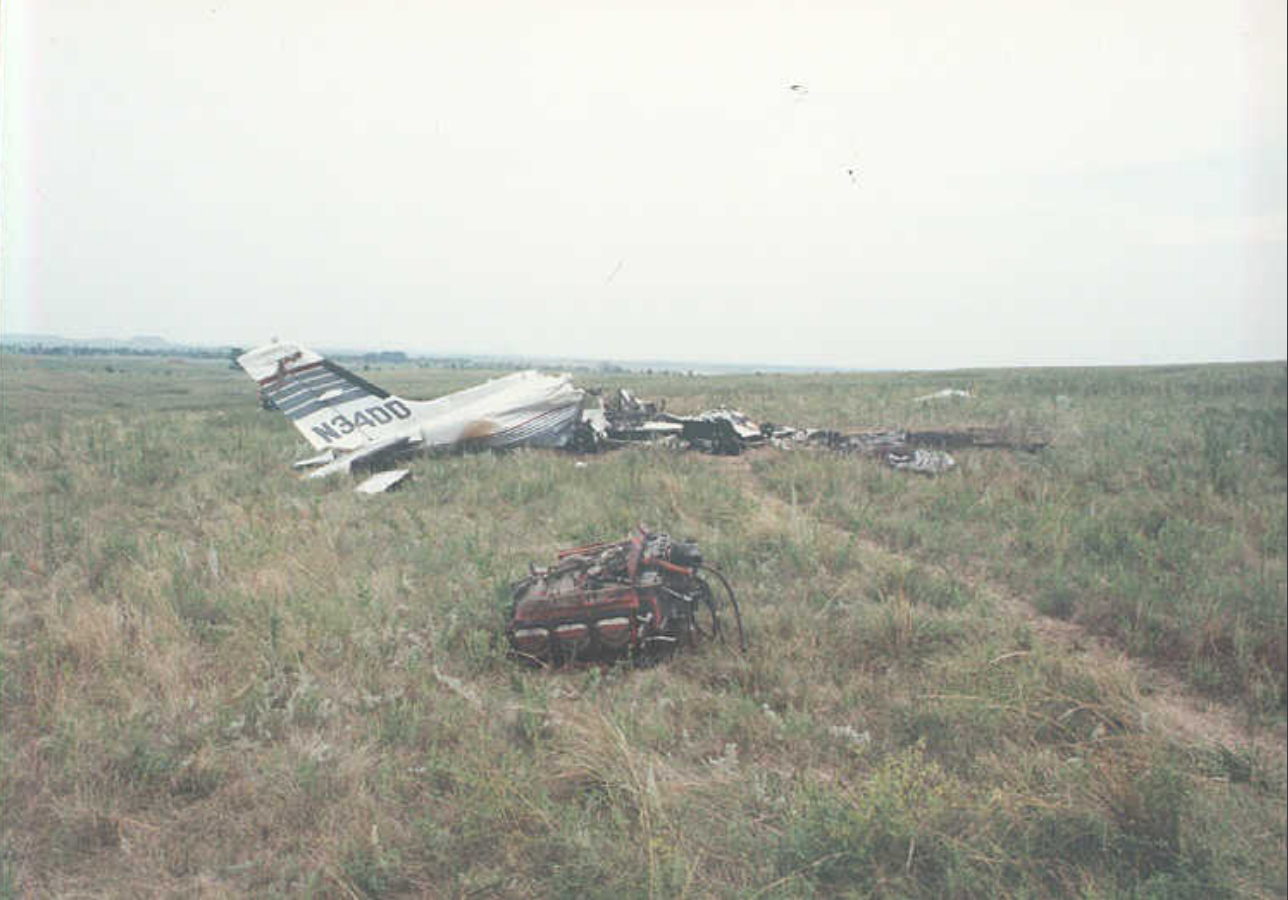
ASN Wikibase Occurrence # 35486
This information is added by users of ASN. Neither ASN nor the Flight Safety Foundation are responsible for the completeness or correctness of this information.
If you feel this information is incomplete or incorrect, you can submit corrected information.
| Date: | Wednesday 23 August 2000 |
| Time: | 02:07 |
| Type: |  Cessna 340A |
| Owner/operator: | Action Mechanical |
| Registration: | N34DD |
| MSN: | 340A-0308 |
| Total airframe hrs: | 3819 hours |
| Engine model: | Continental TSIO-520-KCNB |
| Fatalities: | Fatalities: 3 / Occupants: 3 |
| Aircraft damage: | Destroyed |
| Category: | Accident |
| Location: | near Mission Sioux Airport (0V6), Mission, SD -
 United States of America United States of America
|
| Phase: | En route |
| Nature: | Executive |
| Departure airport: | Mission Sioux Airport, SD (0V6) |
| Rapid City Regional Airport, SD (RAP) | |
| Investigating agency: | NTSB |
| Confidence Rating: |
On August 23, 2000, at 0207 central daylight time, a Cessna 340A, N34DD, was destroyed on impact with terrain and fire following departure from the Mission Sioux Airport (0V6), Mission, South Dakota. Night visual meteorological conditions prevailed at the time of the accident. The 14 CFR Part 91 business flight was not operating on a flight plan. The commercial pilot and two passengers were fatally injured. The flight was originating at the time of the accident and was en route to the Rapid City Regional Airport (RAP), Rapid City, South Dakota.
The corporate airplane was destroyed on impact with rolling terrain and fire 1.3 nm northeast of the Mission Sioux Airport (0V6), Mission, South Dakota. The flight was en route to the Rapid City Regional Airport, Rapid City, South Dakota, which was located 114 nm on a magnetic bearing 284 degrees from 0V6. The 290 foot long wreckage path was oriented on a magnetic heading of 290 degrees. Night meteorological conditions prevailed at the time of the accident. A witness and communications with the airplane/pilot indicate that the pilot had a continuous duty time of approximately 21 hours that began at least at 0414 mountain daylight time on the day prior to the date of the accident. The wreckage was distributed along 230 feet with propeller slash marks at the beginning of the wreckage path. Both propellers displayed twisting. Postaccident component examination revealed a preexisting crack in the right turbocharger's exhaust but no indication of melting of the fuel lines in the adjacent area. No other system anomalies were noted.
Probable Cause: The aircraft control not maintained by the pilot. A contributing factor was pilot fatigue.
Accident investigation:
 |
|
Sources:
NTSB: https://www.ntsb.gov/_layouts/ntsb.aviation/brief.aspx?ev_id=20001212X21659&key=1
Images:





Photos: NTSB
Revision history:
| Date/time | Contributor | Updates |
|---|---|---|
| 24-Oct-2008 10:30 | ASN archive | Added |
| 21-Dec-2016 19:22 | ASN Update Bot | Updated [Time, Damage, Category, Investigating agency] |
| 12-Dec-2017 19:02 | ASN Update Bot | Updated [Departure airport, Source, Narrative] |
Corrections or additions? ... Edit this accident description
The Aviation Safety Network is an exclusive service provided by:


 ©2024 Flight Safety Foundation
©2024 Flight Safety Foundation